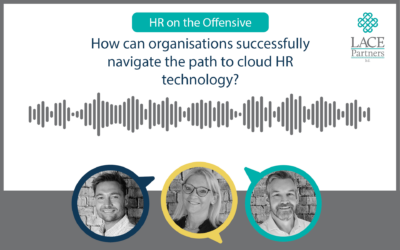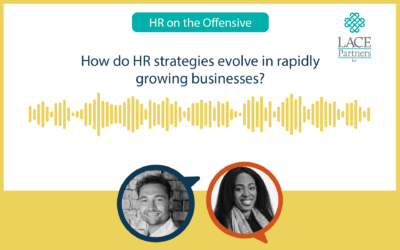 In part one of our series about ‘The Productivity Silver Bullet’, published last week, we defined what the silver bullet is and backed up the idea that it is one of those rare times when an apparent “magical” solution can be found to a lingering problem. Evidence supports the argument that productivity can be increased through home and hybrid working. In this part, we look at the next steps – how to optimise this opportunity to improve people engagement and productivity.
In part one of our series about ‘The Productivity Silver Bullet’, published last week, we defined what the silver bullet is and backed up the idea that it is one of those rare times when an apparent “magical” solution can be found to a lingering problem. Evidence supports the argument that productivity can be increased through home and hybrid working. In this part, we look at the next steps – how to optimise this opportunity to improve people engagement and productivity.
In part one, we looked at the evidence relating to the impacts of home and hybrid working – the next step is to accept that the silver bullet is no longer hiding in plain sight. We’ve exposed it – and its time to choose a course of action that’s right for the business and plan accordingly.
A CIPD study notes the new realities:
- A fifth of workforces are expected to work from home all the time, and two-fifths to regularly work from home
- Since the start of the pandemic, 46% of employees have worked from home all or most of the time, while 37% have not worked from home at all.
- On average, organisations expect around a fifth (21%) of their workforce to work from home all the time, while they expect 40% of their workforce to work from home on a regular basis.
However, there is an emerging divide between those organisations that are embracing the new realities, those that are resisting change and bucking the trend, and those who cannot practically implement home and hybrid working for operational or service reasons.
Resisting Change
For those resisting the shift towards home and hybrid working, the cost could be great. A study of 13,382 global workers (McKinsey & Company July 2022) reporting that 40% of workers cited flexibility in working location was a top motivator, determining whether they stayed in a role, following closely behind salary (41%). A lack of flexibility was also a major factor in resignations, with 26% saying this was a main cause for quitting their previous job. Similarly, in a March 2022 Gallup study of more than 140,000 US employees, 54% of fully remote workers and 38% of hybrid workers said they would look for another job if their company stopped offering remote-work options.
Business led decisions
For some organisations, it is simply not practical to offer home or hybrid working opportunities. This goes beyond the ‘old excuses’ that bring us back to presenteeism and lack of trust, but instead focus on the operational drivers and business models that require a physical workplace presence. The business rationale may well be clear and understood, but still those organisations who are not able to offer the flexibility of home and hybrid working, will need to find other methods to keep the workforce engaged (and compete to retain them). For example:
- Competitive salary increases and recognition programmes
- Flexible working time and leave policies
- Investment in and commitment to employee well-being
- Training and development opportunities
So the evidence is all pointing to a strong argument to implement and optimise home and hybrid working – as an attraction and retention tool, and to optimise both engagement AND productivity. But how do we make the most of it?
Reflect & Adapt
First of all, it is likely that if business requirements allow it, your organisation is already enabling home and hybrid working, as a reaction to restrictions during the pandemic. It’s highly likely that this is functional and adequate, but to make the most of the opportunity this presents, and to make it work for your colleagues, a review of current policies, practices and capabilities could help to bring an understanding of what is working, what is challenging, and what could be done better.
For example, many of our clients who have home and hybrid working practices are finding:
- Scheduling and conducting team meetings are increasingly complex as some people are physically present and others are online
- Team working and collaboration is difficult when all or some are remote, and particularly where there is a mix
- Building mutual trust is key, and takes time
- Maintaining engagement and support for employees that cannot do (or prefer not to do) home and hybrid working is challenging
- They need to interpret and apply new UK legislation around flexible working
- Interpreting the tax and regulatory implications, and setting guidelines around them, can be tricky
- The need to switch from a attendance-based performance approach to an output focussed one is critical
- Managers are not appropriately skilled to lead in a hybrid context
This last point is critical. People managers are caught in the middle of this sudden change in working practices, and new leadership skills are needed to navigate them effectively. Vlada Randjelovic says his life at a Belgrade-based IT company became much harder when the firm introduced hybrid working. Randjelovic managed a sales team of 10 employees, half of whom chose to work in the office, while the other half worked from home. “I ended up having two worlds: one that existed in the office, the other remote,” he explains, “and they would only ever connect over Zoom meetings. I had to suddenly manage two separate teams doing the same work.”
Many people managers are hired and developed to have “hard skills”, driving teams to meet objectives. However, this new world requires a rethink, and the adoption of new or refreshed ‘power skills’ – new ways of communicating, engaging and motivating hybrid teams that have both virtual and office based team members. As Vlada points out: “You had a style of communication that needed to change overnight as people worked flexibly,” he says. “You had to re-think recruiting processes: hiring a worker that you might never meet in person. You had to accept that a fully remote team would naturally build its own workplace culture. Alongside that, everything sped up and intensified: you had less time to learn or make mistakes. It became a recipe for stress, and overwork”. Organisations must consider their future skills requirements, and how they reskill and upskill people leaders to adapt to their new working context.
The impact of UK regulation
Another critical challenge is how organisations interpret and stay compliant to proposed UK legislation which could make both flexible working (hours) and home/hybrid work (work location) an entitlement that workers can request at any time before (and after) being hired. This could put those organisations who have elected not to adopt flexible and hybrid working practices into a difficult spot. In fact, several high-profile business leaders and thinkers have objected to this legislation. Sir James Dyson argues in the Times that giving employees the right to work from home threatens the UK’s productivity. Government interference in how companies are run “will jeopardise the vital in-person collaboration and momentum they need to innovate and succeed”. He says the flexible working policy “will generate friction between employers and employees” and deepen the divide between workers who can’t work from home and those who can, “creating a highly invidious two-tier workforce.” Sir James warns: “The government should survey the international horizon. Britain is losing the race, becoming less competitive, and this policy will make us fall even further behind.”
There is evidence that challenges his point on productivity (as we explored in part one). In many organisations, especially but not exclusively production environments like Dyson, there is a risk of a two-tier workforce where some roles simply cannot be done remotely – presence is critical in roles such as manufacturing, hospitality, or retail. The business context is critical in the consideration of an organisation’s approach to home and hybrid working, and whilst many of the old excuses preventing home working were wiped away during our periods of lockdown, there are some that remain valid. Organisations need to be wary of assuming a one size fits all approach on home and hybrid, but also of the challenges of the perceived two-tier workforce that Dyson describes.
However, the challenges that Dyson mentions – and that have been amplified through the likes of Elon Musk at Twitter, and even Jacob Rees-Mogg in the UK government – are important but are manageable. In our experience, they need careful and proactive consideration, and a programme of initiatives and activities to optimise working practices and develop and maintain a highly engaged workforce.
In the final part of our series next week, we’ll be talking about how to ensure positive people experience in a hybrid world of work.
If you have questions about what you’ve read or would like to share your views, reach out via the form below:






